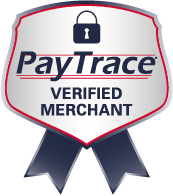3 Critical Metrics to Use on Your Landing Pages
Landing Pages
As many of our readers already know, the “landing page” is whatever page a visitor first enters your site from by following an outside link, either from search engines, your ad, or some other internet resources outside your website. From a basic perspective, the more effective your landing pages are, the more leads you will acquire.
The trick is to measure how effective your landing pages are and how to keep improving them. As a general rule, your prospects want to know what they are getting for their time and/or money before they will complete a landing page form.
Landing Page Analytics
Over time, we have identified 3 metrics that are essential to determining whether your landing pages are performing up to par and how to correct or improve them when you need to.
1. Call-to-Action Click-Through-Rate
In case you aren’t familiar, CTA stands for Call-To-Action and CTR for Click-Through-Rate. Your CTA is the link (usually a button) on a website page encouraging your prospects to do what you want them to do, usually to take you up on your offer (this can be anything from a “Tips” sheet, a report, “How-to” eBook or a myriad of other valued offers).
A successful call to action will have a high click through rate. But you don’t want just anybody to visit; you want those prospects interested in what you have to offer. So to get the best return on that call to action, it needs to attract those prospects who have the highest potential to become customers. Your CTA must carry a clear message about where the visitor will end up and what he will find there.
The CTA click through rate represents the percentage of visitors who arrive at your landing page from your call to action. Successful inbound marketing websites have multiple landing pages, each with their own call to action pointing to it. Each one has its own CTR. Those with the lowest rates should be improved first.
2. Visitor-to-Lead Conversion Rate
This represents the percentage of visitors who “convert” to leads by taking action on your offer. This usually means they have filled out a form you have posted on your landing page or otherwise provided you with some contact information in exchange for something of value from you. Use this metric along with the call to action click-through rate to help you improve landing page conversions.
If you have a high click through rate but a low landing page conversion rate, the landing page content may not be aligning with the call to action you created for this offer. It could be that your visitors are not finding what they expected and are leaving your site rather than filling out the form.
Another possibility is that the content offer is not as appealing to the visitor as it needs to be. In this case, test different content offers and track which offer generates the most conversions. Make changes and measure again. It may be something simple such as the title of the offer or the description of the offer that is letting you down. Test each of these in sequence in order to narrow down what needs your attention.
3. Lead-to-Customer Conversion Rate
This is the percentage of leads who become your customers. This metric will help you identify your most powerful offers. Landing pages that convert leads to customers are the ones you want to present the most often. Offers that convert a lot of leads but few customers must be redesigned or ditched.
These three metrics will guide you in your quest for the perfect call to action and landing page. Since inbound marketing is all about landing pages and inbound links, these metrics will help you test and tweak your efforts until you are bringing in the perfect lead for your product or service at the right time.
Do you have other ways to measure your success with landing pages? If so, please share them with our readers!



